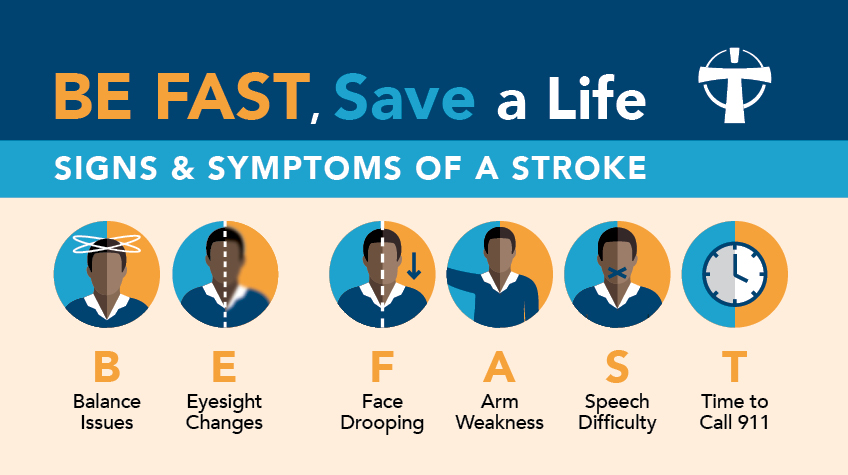Reporting
2023 Quality Metrics | Stroke Related Procedure Outcomes
Below is a description of some of the stroke-related procedures performed at Our Lady of the Lake in Baton Rouge with quality information on the complication rates and outcomes of the patients who undergo such procedures.
Ventriculostomy
A Ventriculostomy is when a catheter is placed into the ventricles within the brain and cerebrospinal fluid (CSF) is drained, usually to relieve elevated intracranial pressure. Typically, a small drill hole is made in the skull to allow the introduction of the catheter through the brain and into the ventricle. It is usually connected by tubing to a cerebrospinal fluid collection device which also allows for monitoring of the intracranial pressure.
| 2023 |
Volume
|
Complications
|
Mortality
|
|
Q-1
|
10 |
1 |
0 |
|
Q-2
|
13 |
0 |
0 |
|
Q-3
|
14 |
0
|
0
|
|
Q-4
|
9 |
0
|
0
|
|
Total
|
46 |
1(2%) |
0.0% |
Decompressive Craniotomy
A Decompressive Craniotomy is a procedure performed to relieve pressure inside the skull. It is commonly done to relieve the pressure caused by mass effect, which can occur after strokes, bleeds and/or trauma. In order to prevent damage to the delicate tissues of the brain, during this procedure, a section of the skull is removed to allow a relief of the intracranial pressure, which gives the brain space to swell without causing further damage.
| 2023 |
Volume
|
Complications
|
Mortality
|
|
Q-1
|
1 |
0 |
0 |
|
Q-2
|
6 |
0 |
0 |
|
Q-3
|
2 |
0
|
0
|
|
Q-4
|
7 |
0
|
0
|
|
Total
|
16 |
0.0% |
0.0% |
Carotid Stenting
Carotid Stenting is an endovascular, catheter-based procedure which unblocks narrowing’s of the carotid artery lumen to prevent stroke. The carotid arteries are located on each side of the neck and extended from the chest to the base of the skull. These arteries supply blood to the brain. When plaque builds up in the carotid arteries, it can reduce flow to the brain and result in stroke. It may also be a source for clots to embolize into the brain, which may also result in stroke.
| 2023 |
Volume
|
Complications
|
Mortality
|
|
Q-1
|
4 |
0
|
0
|
|
Q-2
|
3 |
1 |
0
|
|
Q-3
|
2 |
0
|
0
|
|
Q-4
|
4 |
1 |
0
|
|
Total
|
13 |
2(15.3%) |
0.0% |
Carotid Endarterectomy
Carotid Endarterectomy is an operation during which a vascular surgeon eliminates plaque from the carotid artery by removing the inner lining of the artery if it has become thickened or damaged. This is done to help reduce the risk of stroke. During this procedure, the surgeon temporarily clamps the carotid artery to stop blood from flowing through it. After the surgeon clamps the carotid artery, he or she makes an incision directly into the blocked section. Next, the surgeon peels out the plaque deposit by removing the inner lining of the diseased section of the artery containing the plaque. After removing the plaque, the surgeon stitches the artery, removes the clamps or the bypass, and stops any bleeding. He or she then sutures the neck incision, and the procedure is complete.
|
2023 |
Volume
|
Complications
|
Mortality
|
|
Q-1
|
71 |
2 |
0
|
|
Q-2
|
83 |
6 |
0
|
|
Q-3
|
71 |
4 |
0
|
|
Q-4
|
76 |
6 |
0
|
|
Total
|
301 |
18(6%) |
0.0% |
Aneurysm Clipping
Clipping is a surgical procedure performed to treat a balloon-like bulge of an artery wall known as an aneurysm. As an aneurysm grows, the vessel wall becomes thinner and weaker. It can become so thin that it can leak or rupture, releasing blood into the space around the brain resulting in what is known as a subarachnoid hemorrhage. A neurosurgeon places a tiny clip across the neck of the aneurysm from the normal circulation without blocking off any small perforating arteries nearby. Under general anesthesia an opening is made in the skull. A small clip is placed across the base, or neck, or the aneurysm to block the normal blood flow from entering. The clip works like a tiny coil-spring clothespin, in which the blades of the clip remain tightly closed until pressure is applied to open the blades, and then are deployed across the aneurysm neck, making it secure. Clips are made of titanium and remain on the artery permanently. It is, in some cases, an alternative to aneurysm coiling.
|
2023 |
Volume
|
Complications
|
Mortality
|
|
Q-1
|
3 |
0
|
0
|
|
Q-2
|
0
|
0
|
0
|
|
Q-3
|
0
|
0
|
0
|
|
Q-4
|
1
|
0
|
0
|
|
Total
|
4 |
0.0% |
0.0% |
Aneurysm Coiling
Coiling is a minimally invasive procedure performed to treat a balloon-like bulge of an artery wall known as an aneurysm. As an aneurysm grows, the vessel wall becomes thinner and weaker. It can become so thin that it can leak or rupture, releasing blood into the space around the brain resulting in what is known as a subarachnoid hemorrhage. In this procedure, tiny platinum coils are deploying and packed into the aneurysm to promote blood clotting inside the aneurysm, which secures it. Therefore, they stop blood from flowing into the aneurysm but allow blood to flow freely through the normal arteries. It is, in most cases, an alternative to aneurysm clipping.
|
2023 |
Volume
|
Complications
|
Mortality
|
|
Q-1
|
15 |
1 |
0
|
|
Q-2
|
14 |
1 |
0
|
|
Q-3
|
9 |
0
|
0
|
|
Q-4
|
15 |
0
|
0
|
|
Total
|
53 |
2(3.7%) |
0.0% |
Diagnostic Cerebral Angiography
Cerebral Angiography is a form of angiography which provides images of blood vessels in and around the brain, thereby allowing detection of abnormalities such as arteriovenous malformations and aneurysms. Typically, a catheter is inserted into a large artery (such as the femoral artery) and threaded through the circulatory system to the carotid artery, where a contrast agent is injected. A series of radiographs are taken as the contrast agent spreads through the brain’s arterial system, then a second series as it reaches the venous system. The objective of the exam is to define the site and extend of the arterial abnormality, allowing the physicians to determine the best treatment options.
|
2023 |
Volume
|
Complications
|
Mortality
|
|
Q-1
|
28 |
2 |
1 |
|
Q-2
|
35 |
0
|
0
|
|
Q-3
|
32 |
0
|
0
|
|
Q-4
|
34 |
0
|
0
|
|
Total
|
129 |
2(2.0%) |
0.0% |
Thrombolytic
Thrombolytics, Alteplase (Activase) or Tenecteplase (TNK-tPA), are a type of medication used for thrombolysis or as a “clot buster” to dissolve the clot blockage within the artery during a stroke. Effectiveness of this medication decreases with time and does have a risk for bleeding following the administration. Not all patients are candidates for this treatment as there are certain inclusion/exclusion criteria requirements.
|
Benchmark Group
|
Measure Group |
Measure |
Time Period |
Total Patients |
Numerator
|
Denominator
|
Patients Excluded |
% of Patients
|
| FMOLHS - OLOLRMC
|
CSTK Measures |
CSTK-05a |
2023 |
1246 |
1
|
70 |
1176 |
1.4% |
Thrombectomy
A thrombectomy is a procedure performed to remove a clot that is blocking on of the large arteries of the brain during a stroke. This procedure is performed by inserting a catheter with a device attached to remove the clot. This procedure can be done in addition to the administration of a thrombolytic (tPA) medication or without, however effectiveness of this procedure decreases with time. Not all patients are candidates for this procedure as there are certain inclusion/exclusion criteria requirements.
|
Benchmark Group
|
Measure Group |
Measure |
Time Period |
Total Patients |
Numerator
|
Denominator
|
Patients Excluded |
% of Patients
|
| FMOLHS - OLOLRMC
|
CSTK Measures |
CSTK-05b |
2023 |
1246 |
6 |
143 |
1103 |
4.2% |




